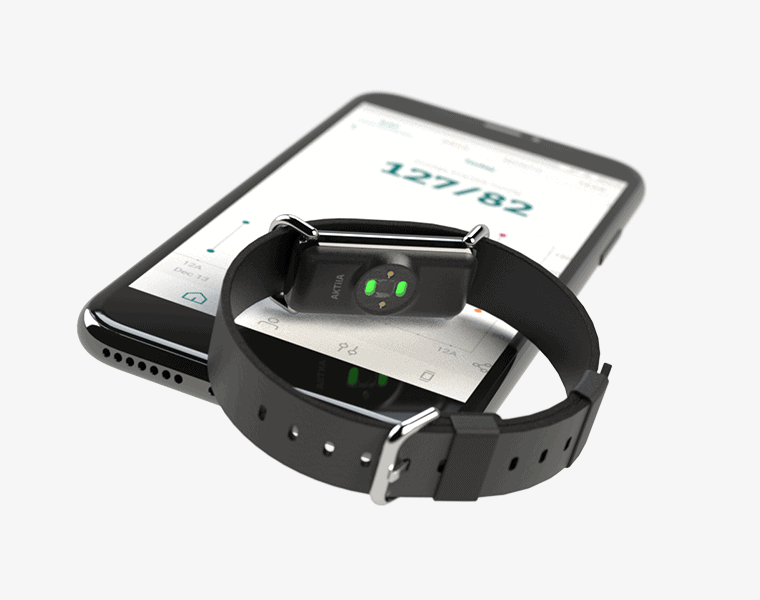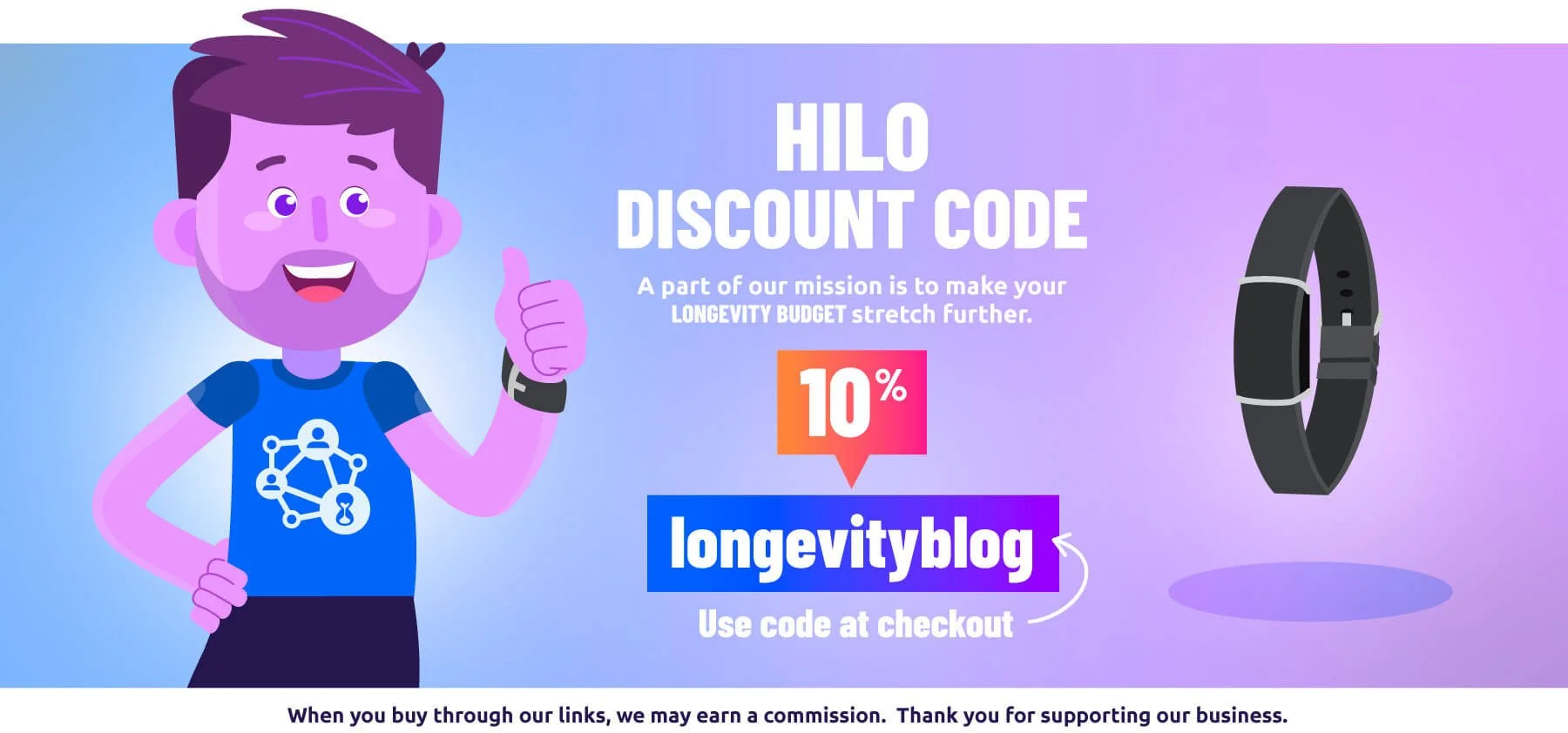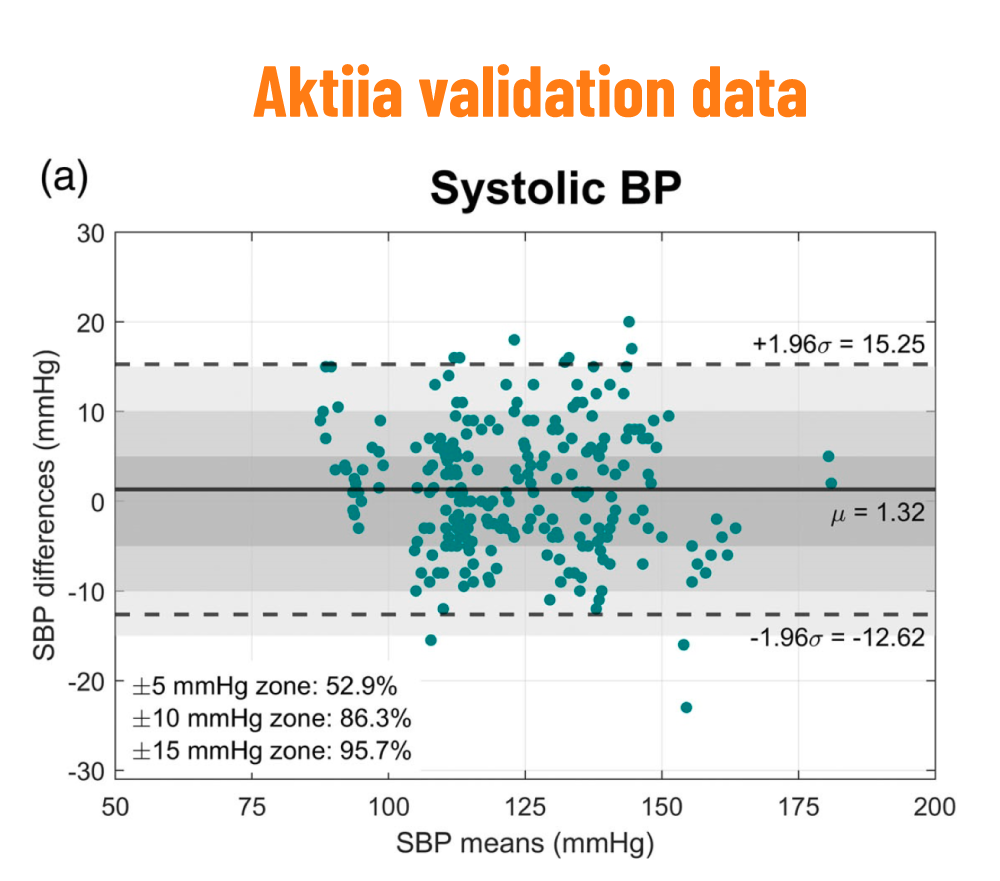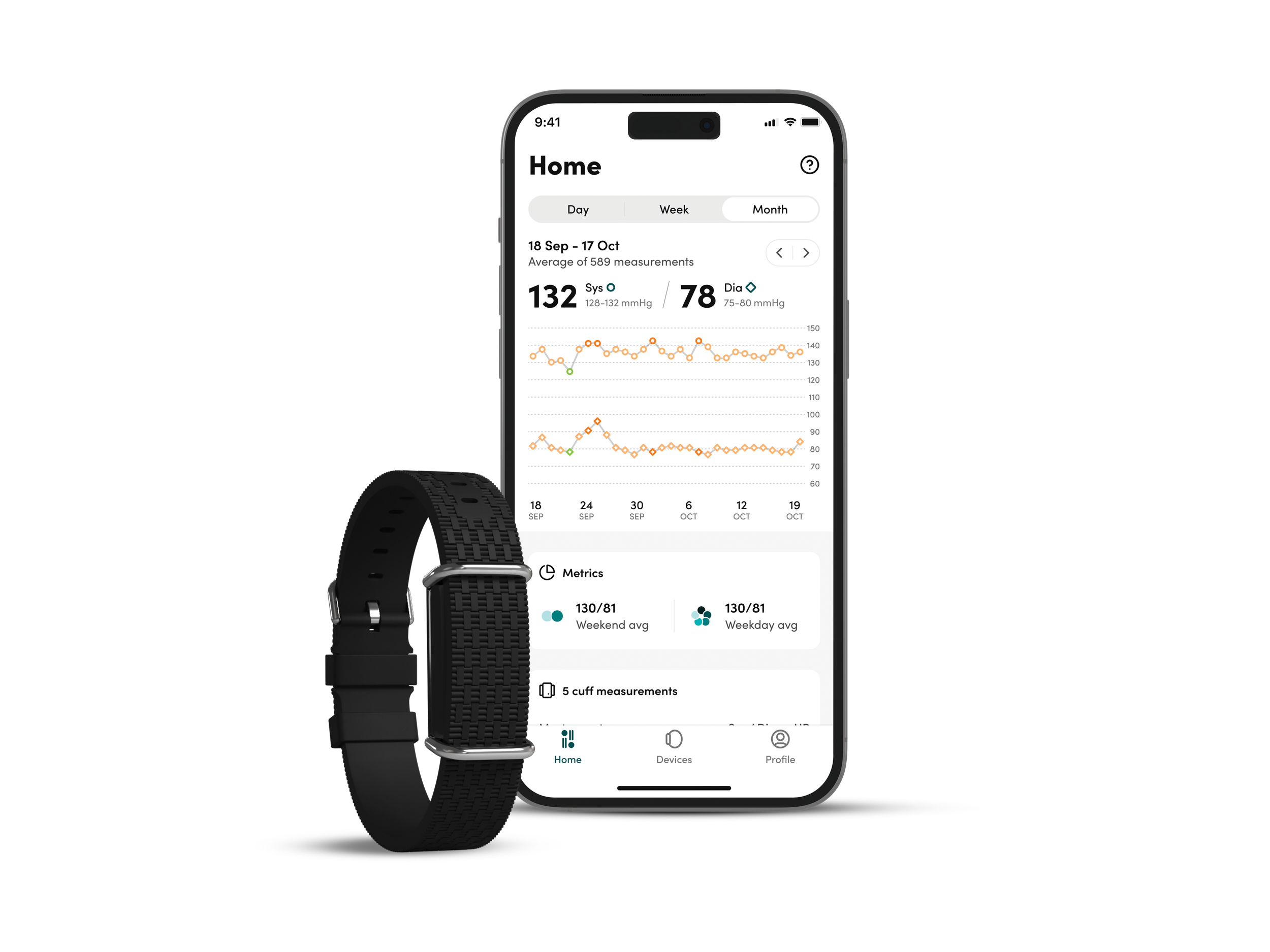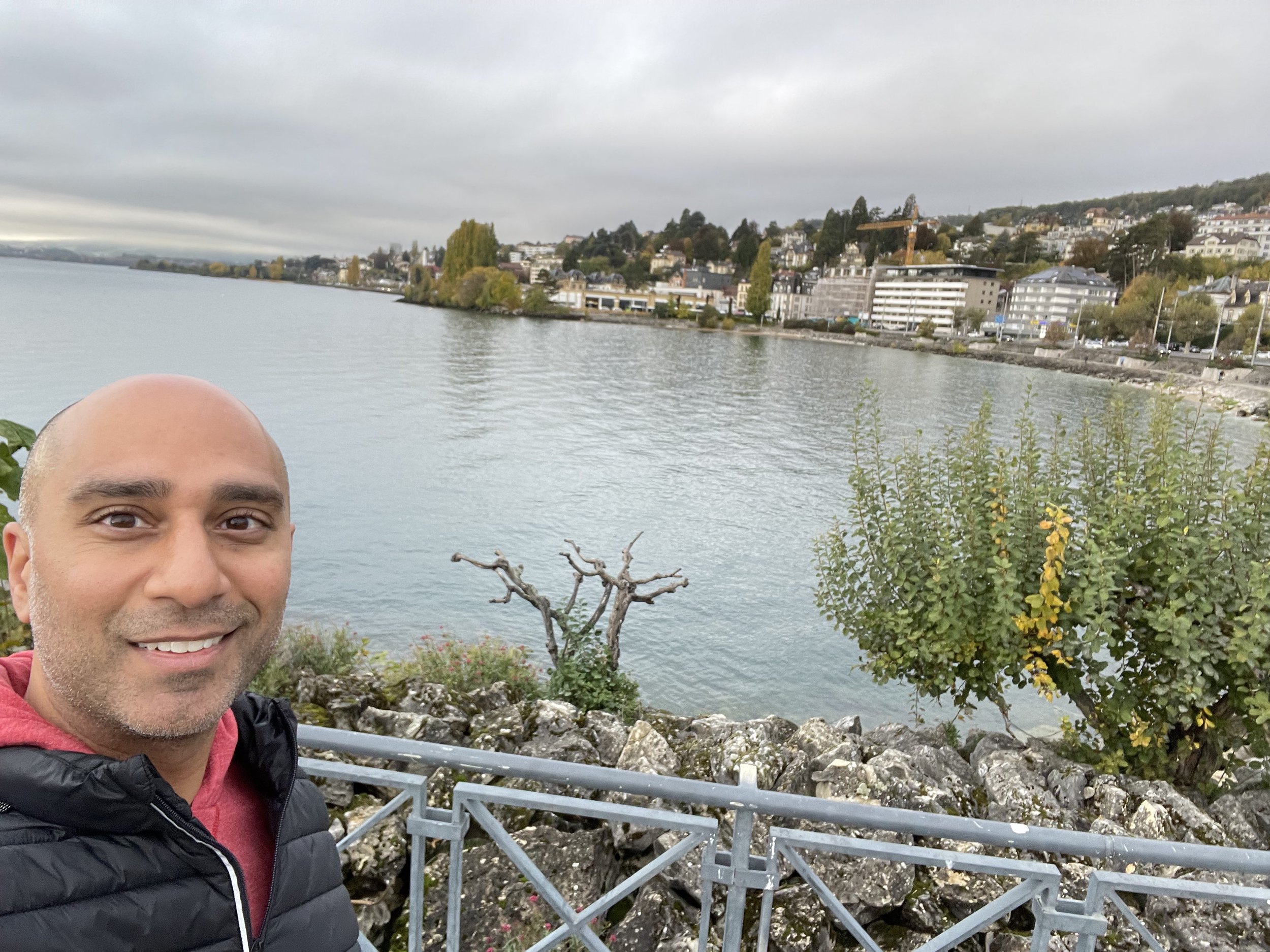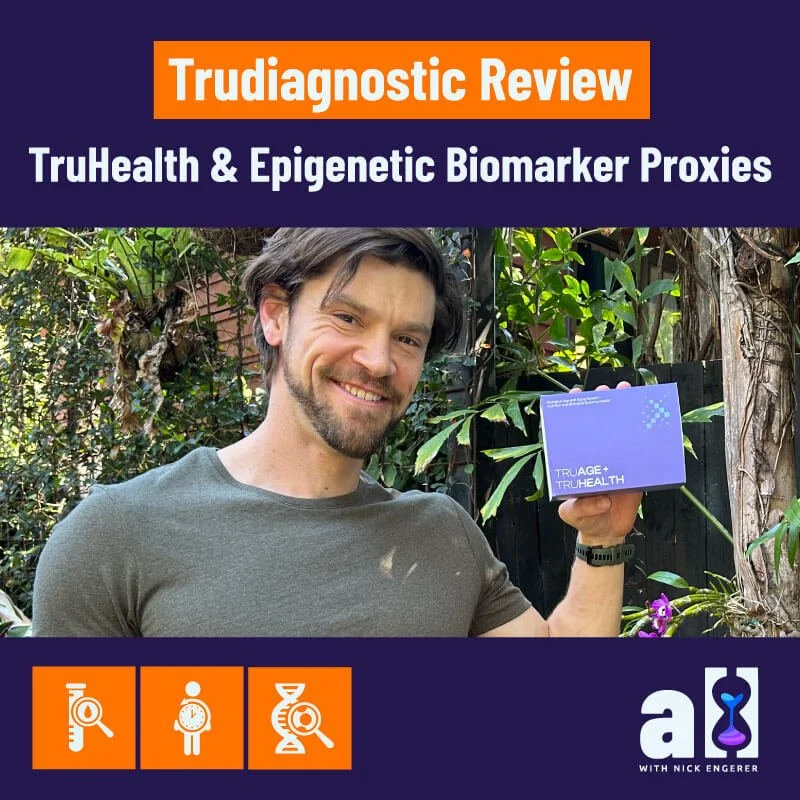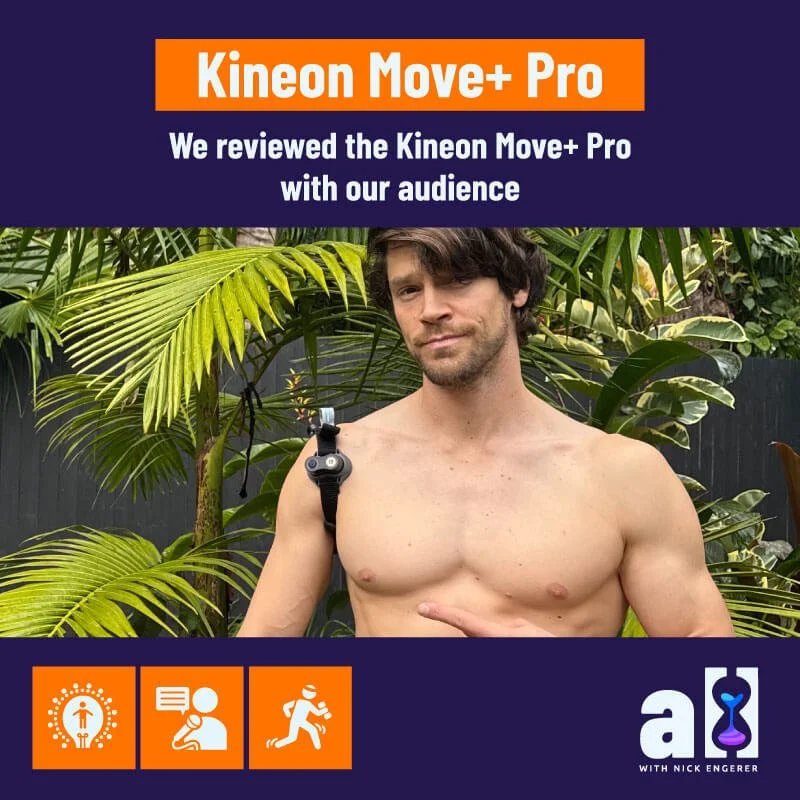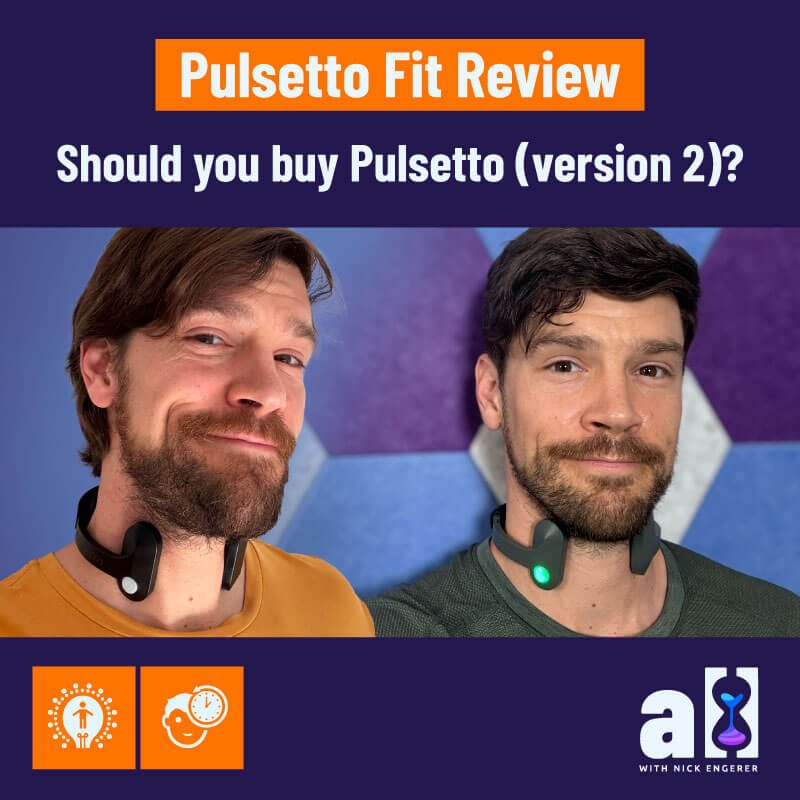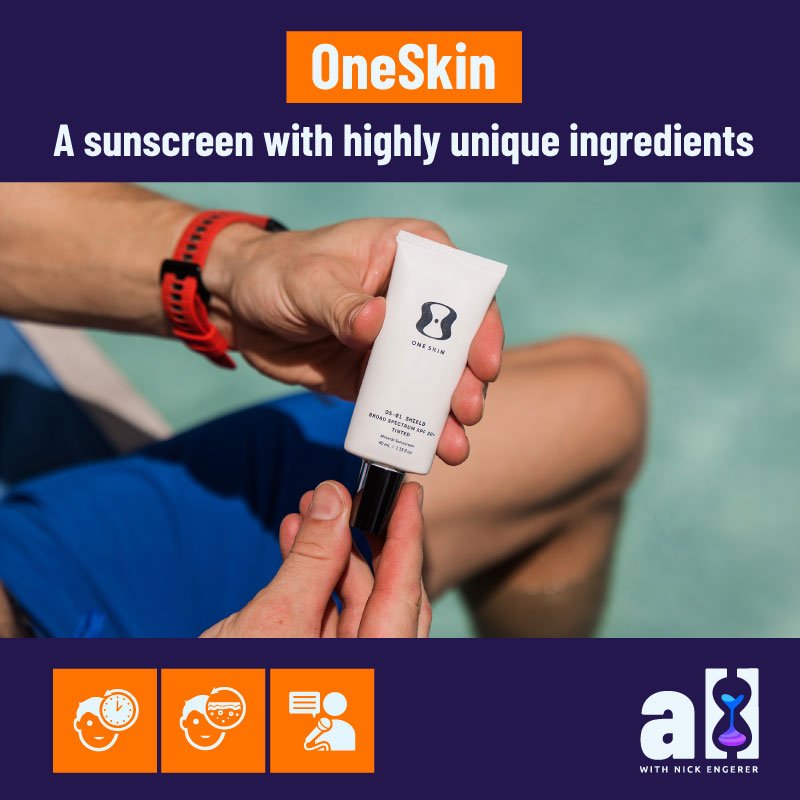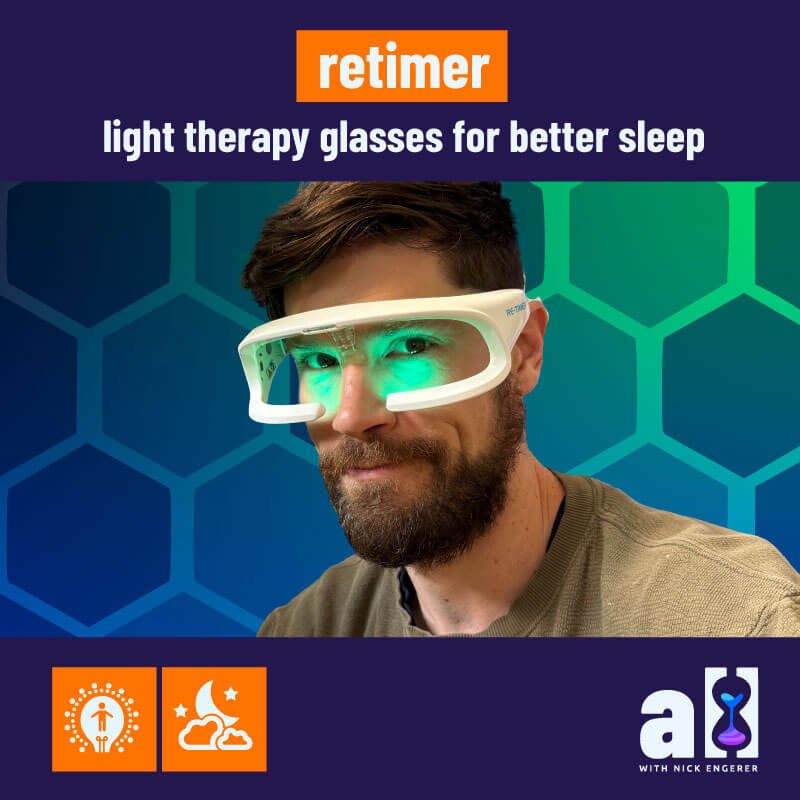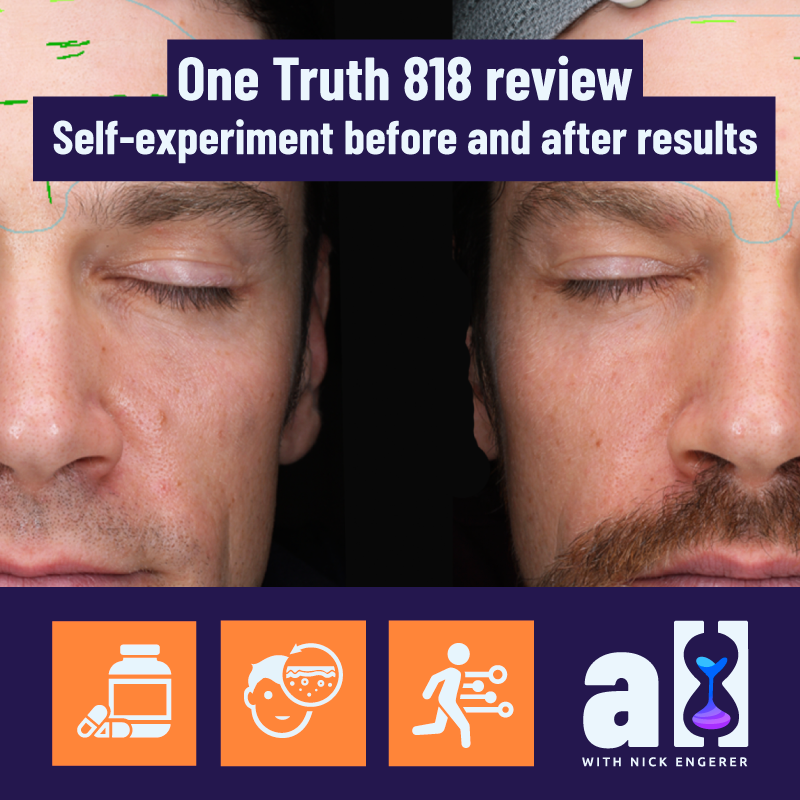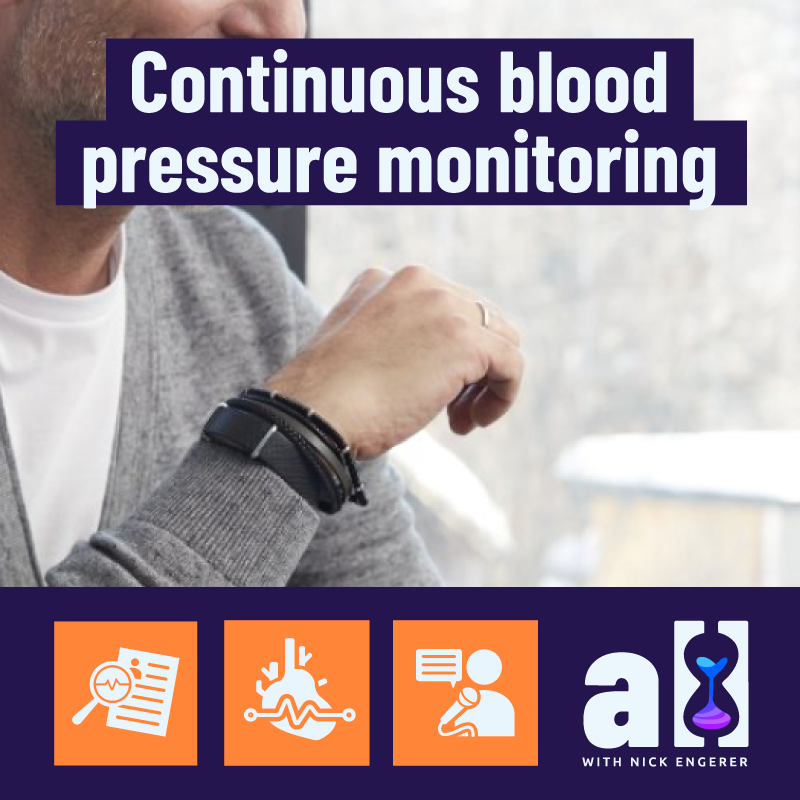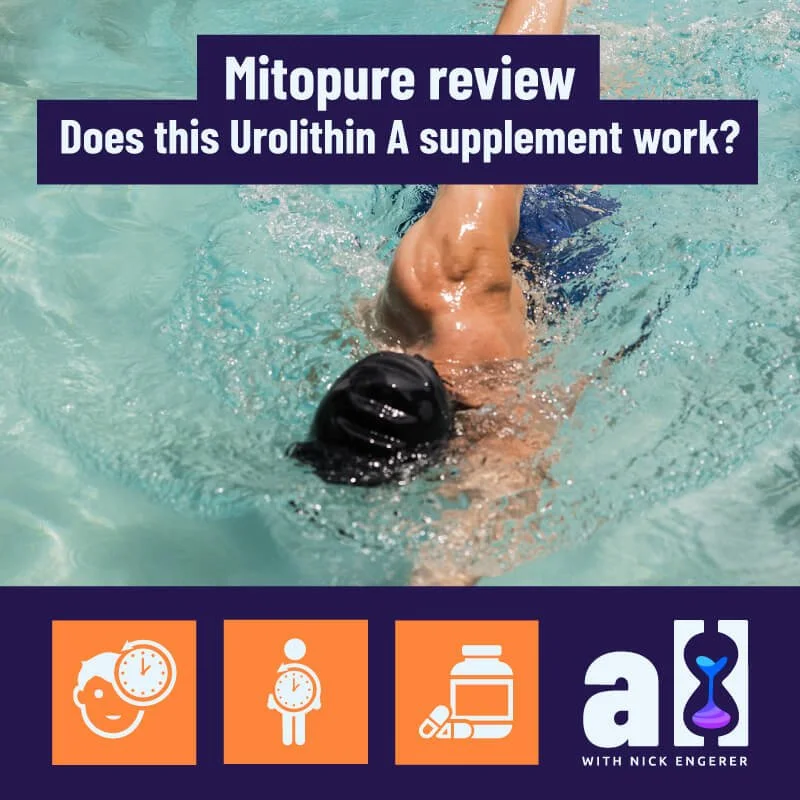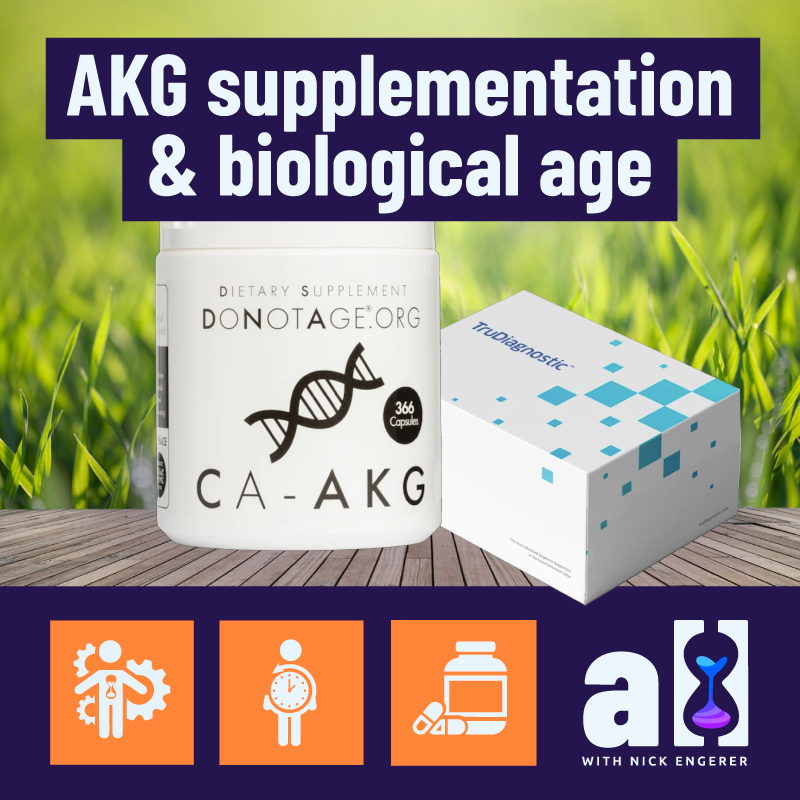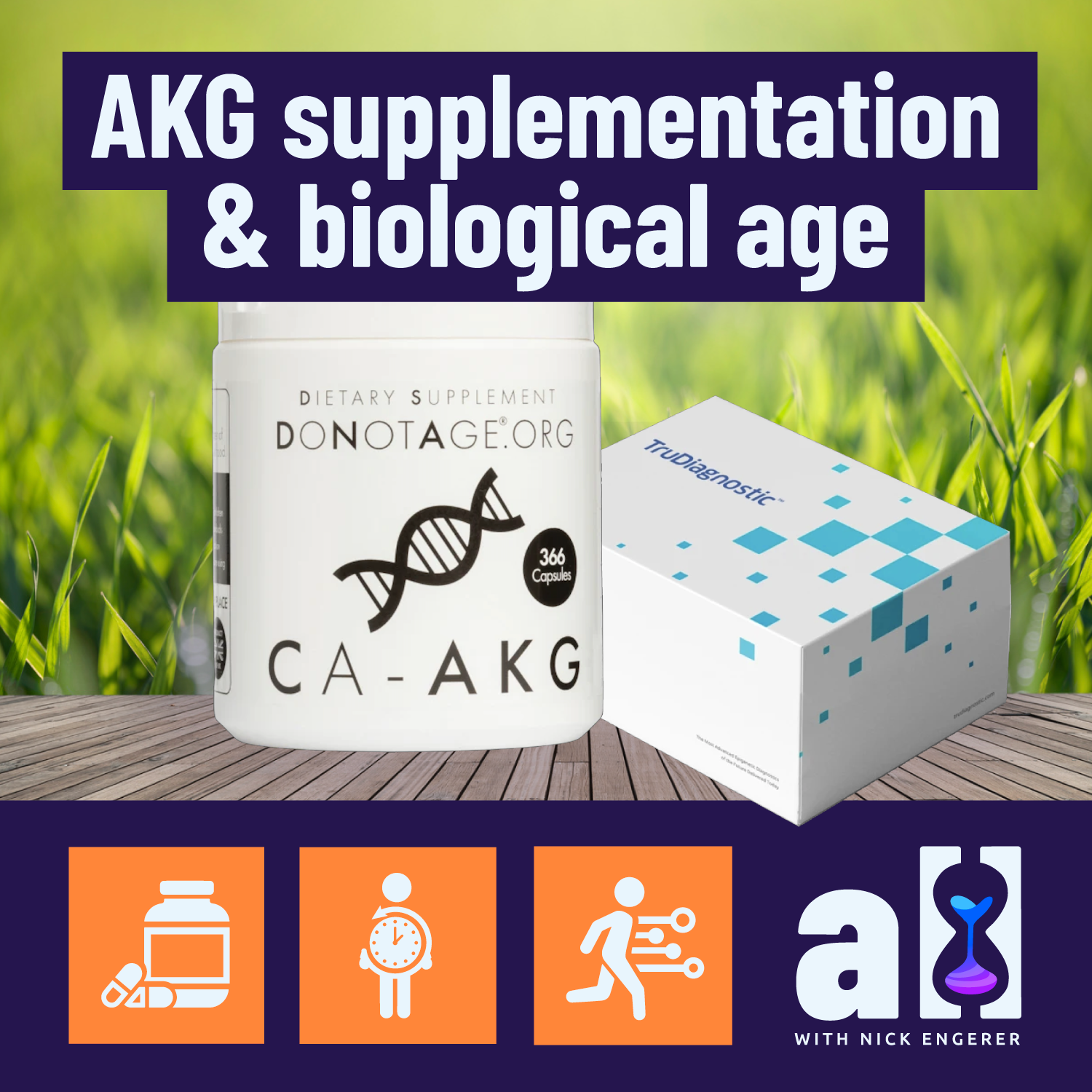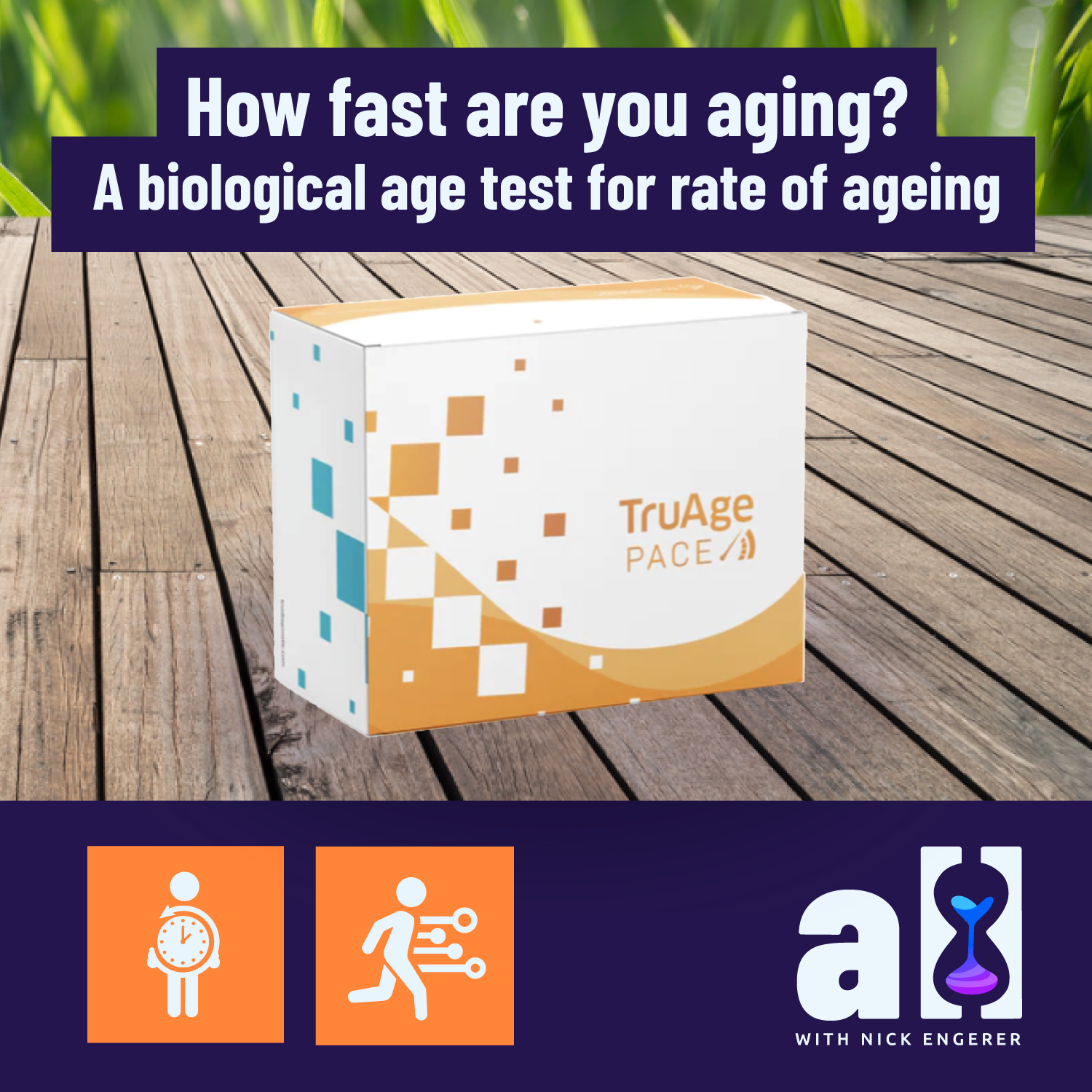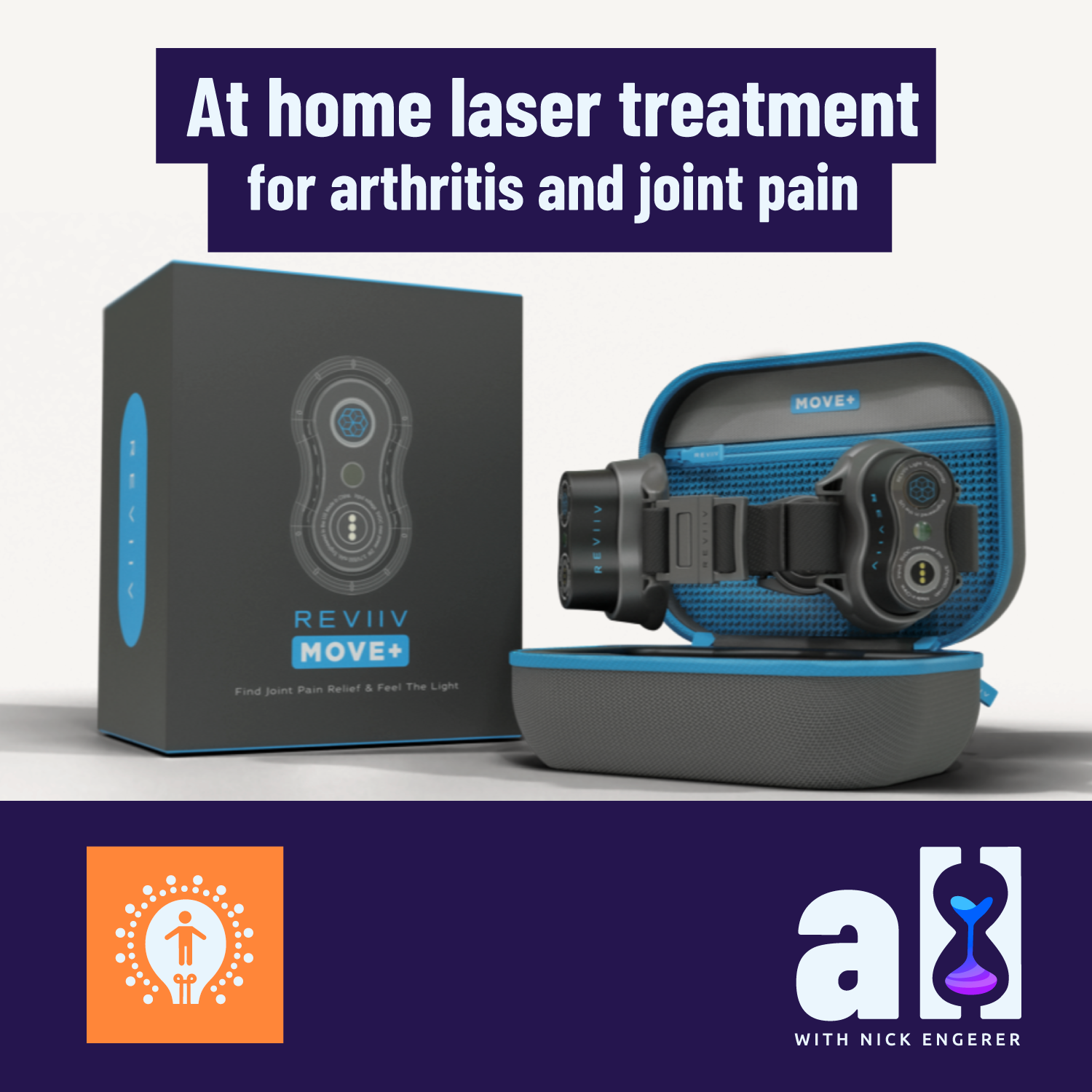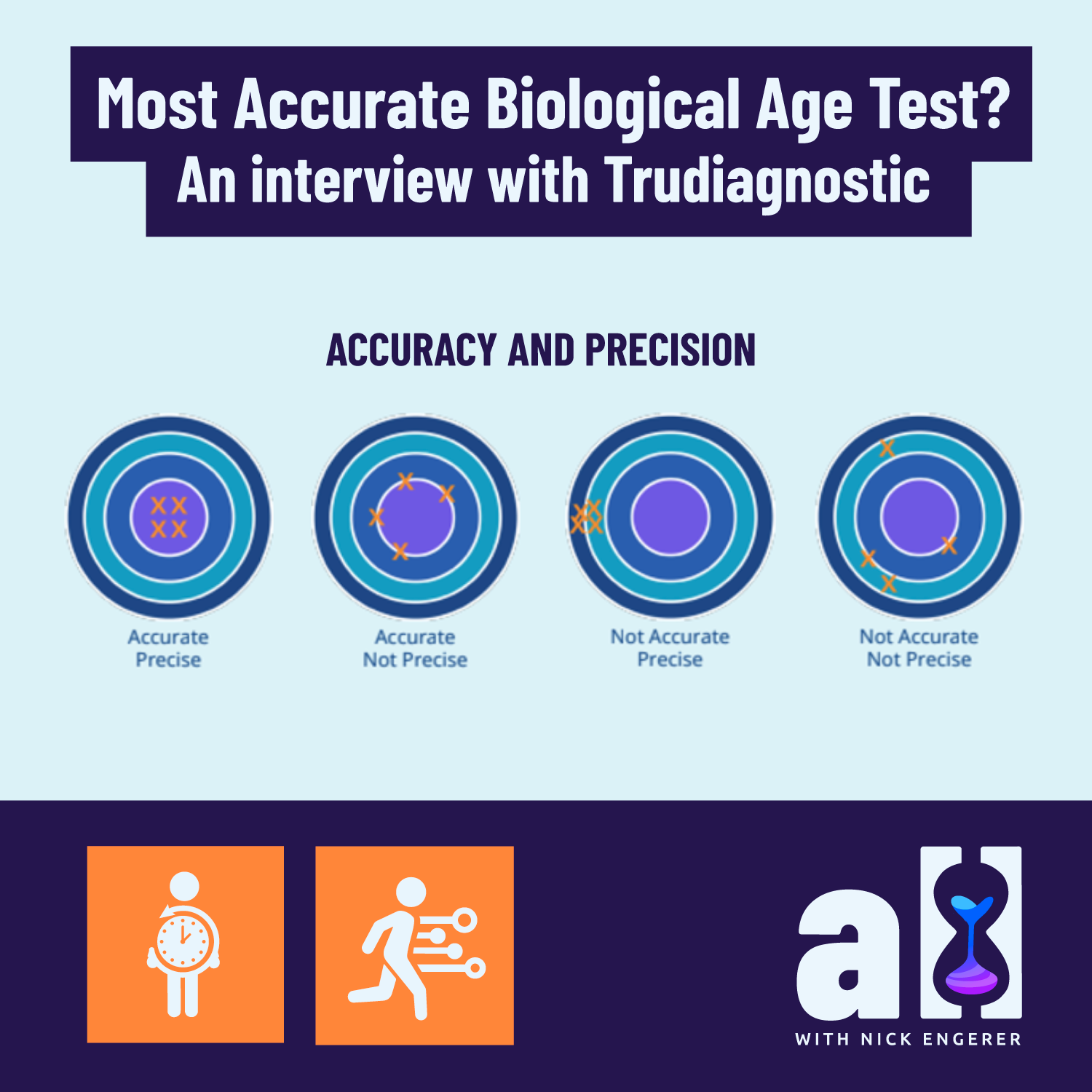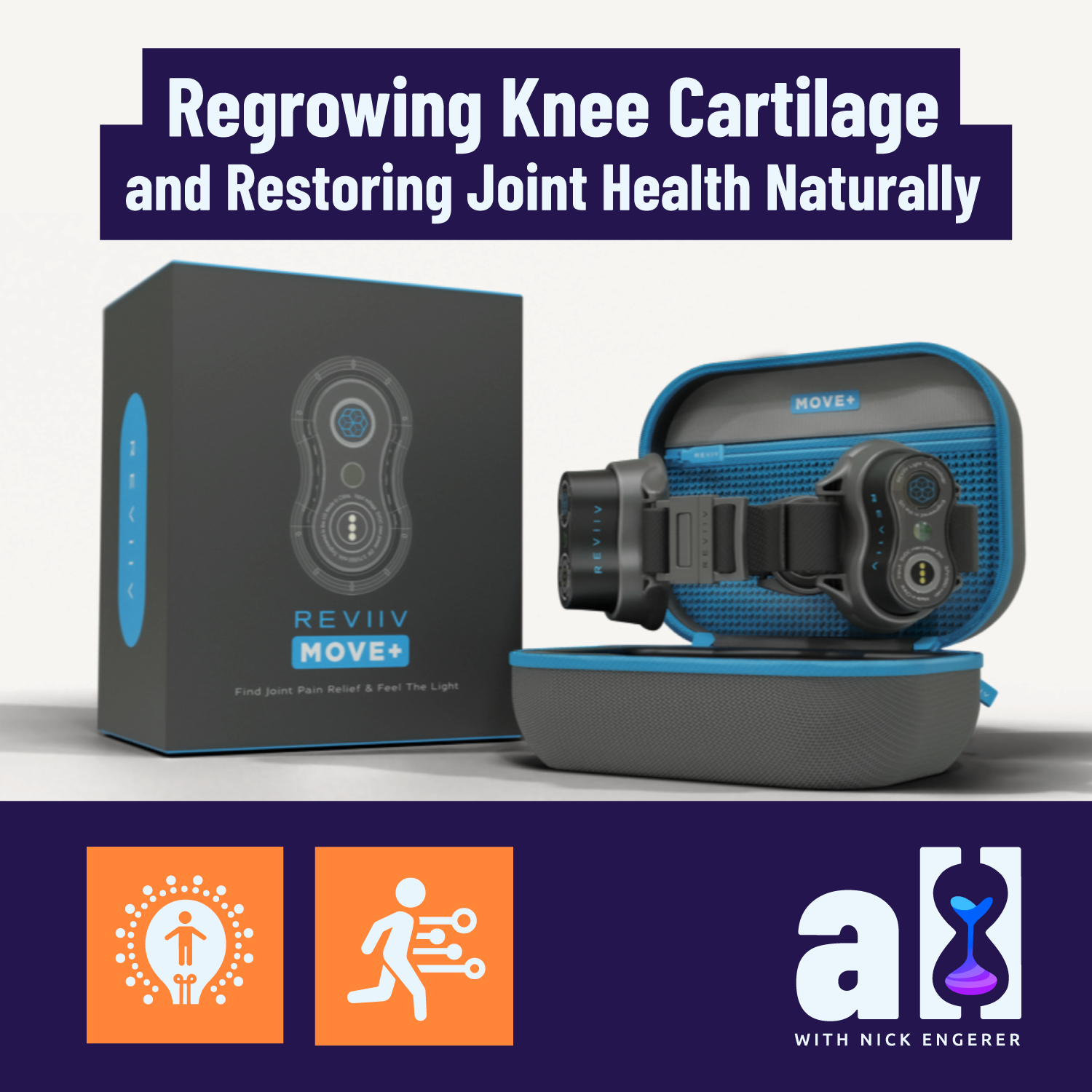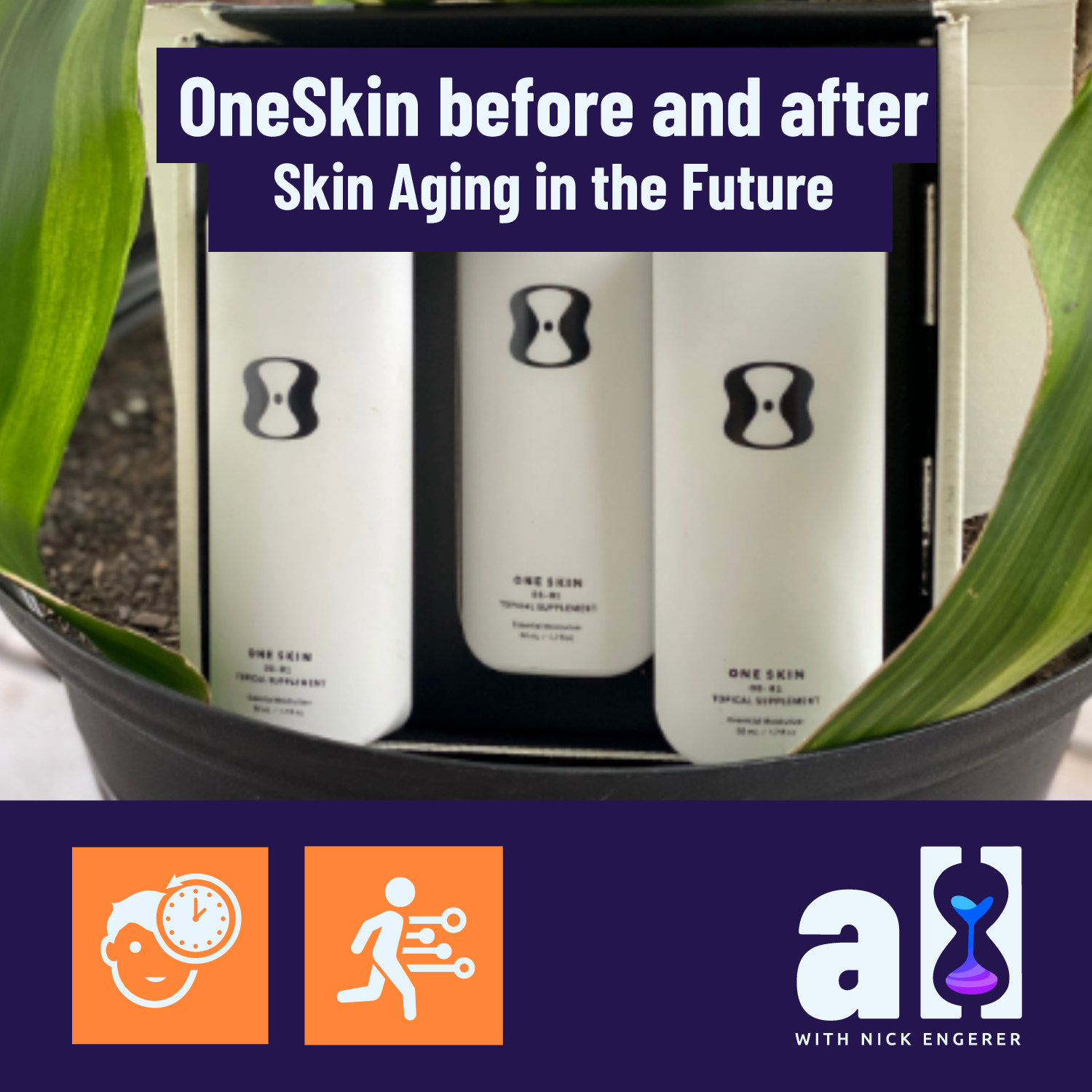Wearable continuous blood pressure monitor technology is finally here
At last, a continuous blood pressure monitoring wearable arrives
Continuous blood pressure monitoring through a high quality wearable device is now possible. In our post today, we’ll take a detailed look at the latest wearable continuous blood pressure monitor from our collaborators at Aktiia.
Monitoring your blood pressure is an absolutely pivotal part of your longevity strategy. After all, cardiovascular disease, including heart attacks and strokes comprise the most common cause of death for both men and women, globally.
And you guessed it, high blood pressure is one of the top risk factors for cardiovascular disease, as well as for kidney disease.
However, there are several challenges for blood pressure monitoring, which make it difficult to appropriately manage your risk. The most troublesome is the relative lack of blood pressure measurements; you may only get a few such measurements a year at a doctor’s office visit.
Blood pressure constant monitor technologies have not historically been used. For nearly everyone, if you do decide to monitor your blood pressure at home, you will still only manage to get a few measurements per week or per month, if you are diligent. It is also very important to complete these measurements in a controlled and routine fashion.
This data shows the different ranges of blood pressure in adults and how varied it can be.
Healthy blood pressure ranges were set by a foundational research study call the the SPRINT trial, completed in 2015, and are pictured here. Comprised of a systolic (SCP) and diastolic (DBP) blood pressure measurement, respectively representing the pressure of when the heart muscle contracts and in between beats.
Continuous blood pressure monitor wearables are a new technology option, if you’re serious about your longevity. And you’ll want to stay in the ‘normal’ range, to lower your risk of potentially fatal disease. However, a shockingly high number of people have elevated blood pressure. In the United States, for example, nearly 50% of adults have stage 1 or stage 2 hypertension. Even more concerning, as we will learn in our interview today, half of those individuals don’t even know it.
Continuous blood pressure monitor technologies
For these reasons and more, we are very excited to introduce the latest in continuous blood pressure monitoring from our partner’s at Aktiia. Consider the following statistic from their website:
“Hypertension is the epidemic of our time. Hypertension affects 1.3 Billion people and is the leading cause of heart attacks and strokes globally.
Such statistics are again, quite shocking. And the primary barrier to doing something about this epidemic level of high blood pressure around the world, is making it easily accessible for more people to monitor their blood pressure closely and easily.
The state of the art in continuous blood pressure monitoring wearables - the Aktiia 24/7 system. Worn on the wrist, tracked in an app. Monitor your blood pressure all day and all night without any annoying cuff squeezes.
At Aktiia, they have developed a completely wearable solution which can monitor your blood pressure without constantly wearing a blood pressure cuff (as in “continous blood pressure monitoring cuff” but without the “cuff” part, just what we’ve been looking for!)
If you’re new to A Longer Life, you’ll quickly learn it is our role to introduce you to novel longevity technologies like this one, and guiding you on how to choose the most effective solutions for extending your own healthspan.
We love to get deep into the details with the founders and lead scientists at longevity tech companies to help you cut through the marketing and onto what really works.
Without any further delay, let’s hear from the Chief Medical Officer at Aktiia, Dr Jay Shah, who is a cardiologist with 15+ years of medical expertise and leadership in healthcare and is a wealth of knowledge on the topic of blood pressure monitoring.
This interview was conducted in October 2023 over Zoom and is an audio transcript with minor edits for clarity, brevity and correctness.
Aktiia enables continuous blood pressure monitoring with a wearable
A Longer Life (ALL):
Jay, thank you so much for joining us on A Longer Life today, we are really interested in your novel piece of technology that allows continuous measurement of blood pressure. You are the Chief Medical Officer at Aktiia and you are here to tell us about that technology. Thanks for joining us.
The status quo in modern medicine is blood pressure measurements taken by a cuff on the arm, sometimes there is still a stethoscope involved, and is only done once or twice a day at most. However, longevity technology has advanced and there is now the ability to measure blood pressure continuously.
We are really curious to know upfront - what is the most interesting thing that measuring blood pressure continuously reveals versus it being measured just once or twice a day?
Dr Jay Shah (JS):
It comes down to the main reason that elevated blood pressure actually causes death and disease to your body - BP does this over long periods of time.
Taking one measurement at one moment, at one point in time, maybe once or twice a year, really does not allow any one physician, person/patient to understand what are their blood pressure trends, fluctuations, consistency, over long periods of time, over weeks, months, and years.
In fact there is no current or traditional technology that allows us to do that until very recently and that is really at the heart of what Aktiia does. Our central perspective about blood pressure is that consistently optimising blood pressure over long periods of time is how a person can mitigate the risk of blood pressure driven diseases.
To do that, you need a tool that allows you to consistently assess, look at, manage and optimise your blood pressure over long periods of time.
 |
Blood pressure constant monitor to reveal masked hypertension
ALL: The reason behind this, there is this word called 'hypertension'. Hypertension is referring to systolic and diastolic blood pressure measurements above a certain range that we have established through clinical research, that is the healthy, borderline and unhealthy ranges.
To be above the healthy range, you are creating the risk that you are talking about. For many people, they are unaware they have hypertension. There is this concept called “masked hypertension”. What does that term mean? And what is the approximate percentages of adults who have masked hypertension?
JS: Masked hypertension is a term that refers to situations where people have normal appearing blood pressure in the physician's office when it is checked by a nurse or a physician. But at home, which is where we spend 99.9% of our lives, 'in the at home environment', they have higher than normal blood pressure.
In effect, it is essentially missed. People can go years, decades having higher than normal blood pressure, and that is what is called masked hypertension. That is about 15% of the population who have hypertension.
Another version of that is called “white coat hypertension”, which is sort of the inverse, where someone has high blood pressure in the clinic, so the physician and patient get worried, but actually the blood pressure is normal at home.
High blood pressure often starts fairly early on in life - in our 20's, 30's and 40's. Precisely during the decades where we are the least aware of our own health, the least proactive generally.
“Only after years and decades, for many reasons, and not just masked hypertension, but for many reasons, high blood pressure often goes undiagnosed. Over that period of time is really when blood pressure really starts to do its significant damage.”
How to sleep with a 24 hour blood pressure monitor?
ALL: There are a lot of variables that are involved in an individual’s blood pressure. This is known, this is not a surprise. For quite some time now, there have been options for using an 'ambulatory' or '24 hour' blood pressure monitoring device to get a full day or maybe a few days of blood pressure data. Even Though that has been available for quite some time, there is not very much uptake.
Why don't we see more people using continuous blood pressure monitoring data?
Aktiia vs ambulatory device comparison data
This data shows the difference between using a 24/7 monitor compared to the normal ambulatory device. You can read the study for yourself here.
JS: There are several reasons.
First of all, it's dramatically cumbersome, it's a real pain to use it. There are reimbursement issues in many countries where it is often not paid for or not paid very well, for a physician or health care system to actually do it. Which of course limits the motivation in some ways.
Even if they did, or even if someone did use a 24 hour ambulatory blood pressure monitor, it's still a regular cuff that stays attached to your upper arm for the entire 24 hours and you cannot remove it, and you have to carry a fairly large box with you for the 24 hour period.
About every 15 to 30 minutes, it will go off. It will inflate, squeeze your arm and take a blood pressure measurement, even when you are sleeping.
For all those issues and reasons it is not reused very commonly outside of usually highly specialised hypertension centres or academic institutions, or some other select sort of health care centres.
Continuous blood pressure monitor wearable data
ALL: It certainly sounds quite uncomfortable, but the data it yields certainly would be much more insightful than a single point measurement?
JS: Remember, it's 24 hours and generally it's not repeated on a yearly basis, or every six months or every three months, it's generally done once and usually to answer a specific question.
The benefits of being able to share the data with your health practitioners will help with the longevity of your health journey
For example, if a physician is confused about what is this person's true blood pressure they suspect white coat hypertension, masked hypertension or some other confusion about what this person's blood pressure is, then that is the scenario where we where we might order a 24 hour ambulatory blood pressure monitor and it is done almost exclusively through physicians, as you need a prescription for it.
Even if you did it, it is still only for a single 24 hour period. And as you just said, blood pressure fluctuates continuously, day by day, even changes week by week, it might change month by month.
If diet changes, if your weight changes, if your alcohol intake changes, if you change medicines, if you change all the other factors that affect your blood pressure, that pattern changes.
There have even been studies where the same person repeats the 24 hour test three months apart where there can be up to a 40% variability in the readings. So it is still a snapshot, usually one day's worth of data.
What is the best continuous blood pressure monitor
ALL: To summarise, we hear there are three real barriers to greater uptake of 24 hour ambulatory blood pressure measurement. One is, you have to go to your doctor to get it. Second, there is the cost barrier and whether or not that device costs you out of pocket. Third, it is particularly cumbersome and not very comfortable.
Elegant Swiss Design which you charge and wear it all day long. The Aktiia 24/7 system sits on your wrist comfortably, watching the blood surge through your capillaries to create highly accurate estimates of blood pressure.
This brings us nicely to discussing the solution that Aktiia have developed in their very unique combination of a cuff, a bracelet and an app that allows us to monitor blood pressure continuously.
And when we say ‘continuously’, that’s important because we are going into a completely new space, where we have genuine continuous measurement. What does that enable for everyday at home use? What might we learn from this data?
JS: It is easy to use, it's simple, it's an easy to use wearable, you just put it on your wrist and you set it and forget it. Once every month you have to do a calibration step that takes about 10 minutes driven through the app and using the cuff and that is about it.
You just have to keep it charged, wear it - and it has the form factor of elegant Swiss design. It enables you to just not have to think about the act of taking blood pressures. Typically, with any device, traditional cuff you have to think about it, it is an active process, you have to sit down, you have to create a space for yourself, you have to sit in the right position, have the right environment, do all the things that you are supposed to do to take an accurate cuff measurement.
With our device, it is all built into the programming that it takes accurate measurements at the right time, and it is done for the user.
24 hour blood pressure monitoring versus continuous blood pressure monitoring
ALL: How many readings does it take per day?
JS: On average, you get about 27 readings per day. It's not taking every minute, because there is too much motion of the wrist to take accurate readings and other other limitations. On average it takes readings slightly more than once an hour.
Remember going back to our primary perspective is that consistency of blood pressure over long periods of time is really what we are trying to solve for. What is more important than one reading, is to compile hundreds and thousands of readings over long periods of time, and to really allow you to understand your long-term blood pressure trends.
There are so many things that this type of data unlocks, and the closest analogy that we have seen, and as most most people are now aware of, are continuous glucose monitors
ALL: And what is this continuous blood pressure monitoring data revealing?
JS: For the first time with this dataset, approximately 800 data points in a month of blood pressure, you can start to see trends and patterns clearly.
One thing this enables is a personal trial where you do an intervention targeted at your blood pressure and see its effect. You can see that cause and effect much more clearly with the broader, bigger dataset that this technology enables.
Again, one of the cardinal issues with blood pressure management is trying to effect behavior change. There are often seven recommended lifestyle changes for BP, all of which are extremely difficult to do and some medications they can try.
As a physician, I really don't know and neither does that person, which one of those seven changes and which one of the medications is actually going to work best for them. We have no idea. We recommend the same thing to pretty much everybody.
How is continuous blood pressure measured?
Data is the key to being able to monitor your blood pressure which allows you to manage your own health. Extensive validation has been undertaken by Aktiia across 5 separate research papers to assure its accuracy and precision.
ALL: We really like this point because it is really valuable to understand what is working for you and there is this opportunity here with this rich data set to do some self experimenting.
Jay before you go on and into that, we want to just ask one or two questions about this technology. You mentioned it is elegant, it is Swiss design, there is a really impressive story here and how this piece of technology was developed.
We are going to talk about how to use it, before we do that, let's talk about where it came from. We are immensely curious.
Your website states there is 18 years of research and development behind the Aktiia technology and that some of that core work came out of novel research done by your CTO, and in his PhD research.
Can you tell us just briefly some of the key milestones that have allowed this technology to come to exist?
JS: It all stems from our two Co-founders, Drs. Joseph Sola and Mattia Bertschi. They met in Neuchatel, Switzerland at an engineering innovation lab called CSEM - the Centre for Semiconductors, Electronics and Microtechnology.
It started in 2003 -2004, before the iPhone was even developed. There was no such thing as a smartwatch. They were starting to use optical sensors to try to derive physiologic parameters. The first thing they did was to go and study and they could measure heart rate. Again, before the smartwatches, and wearable devices.
They developed a way to look at optical signals and derive heart rate from it. Now many, if not most of these technologies around the world eventually licensed some of their scientific work and discoveries.
Continuous blood pressure data: all about the algorithm
ALL: And then they made the leap to blood pressure?
JS: Heart rate was dramatically easier than blood pressure, so they tell me. At that time, they said, wow we have learned a lot about how to look at these sensors and look at these optical signals, what else can we start to learn about? What else can we start to derive? Can we try to derive blood pressure from these data?
That started an 18 year journey. They started with an animal wet-lab, with pigs, studying their arterial physiology, and how the sensors and the optical signals reacted to them. They did it in animal models first and then they did in human models and then they eventually got a working prototype together in about 2017.
This brought them to the point where they thought they could spin it out and commercialise the technology. Five years ago, 2018, they spun out from CSEM, created the company called Aktiia.
Continuous blood pressure data without a cuff
ALL: The core technology behind this measurement - it is not a compression cuff at all. It is not making any noise - this is an optical sensor.
Tell us, how does that technology work? You mentioned understanding arterial physiology, we imagine there is some fluid dynamics in there. Trying to guess pressure changes based on estimated dilation and contraction, the diameter of blood vessels or arteries, veins, etc. Can you give us a bit of insight into that?
JS: The way it works is it takes these lights that are the two green LED lights on the back of all of what you see most smartwatches. There is nothing actually proprietary about the Aktiia hardware. It has two LED lights and an optical sensor and a three way accelerometer.
What it does is it shines those lights into your skin into the capillary bed, the tiny vessels of that are just underneath your skin and it gets a reflection back. That reflection back into the optical sensor creates a a waveform similar to an arterial waveform - not quite the same but similar.
The devices takes about 30 to 50 waveforms, compiles them together, and then they are sent from your device to your phone via Bluetooth, and from your phone to the cloud via the Wifi connection or cellular connection.
In the cloud that is where the algorithm that they have developed and continue to refine over almost 20 years now, goes to work on that optical sensor data. They were able, after all this time in discovery, to build an algorithm that picks out the salient features of those waveforms for them to be able to derive accurate blood pressure and heart rate, and then delivers that data back to your app as blood pressure heart rate data.
You can't feel it, as you said correctly, you can't feel when it's taking a measurement, there's no cuff and there is no squeezing.
“There’s no cuff and there is no squeezing. ”
ALL: There is an important step in this where there is a cuff, and I wanted to just make sure that it was clear what that cuff element on your website product page represents.
You might think I have to wear that, but no, you are doing a once a month calibration. Where does that fit into enabling the algorithm that you just described?
JS: The simplest way to describe it is it puts the numbers in terms of millimetres of mercury. That is the only thing that is missing from the algorithm is that it derives a number and it can use these waveforms to track changes, but it needs something to provide results in units of millimetres of mercury. It's just for that once a month calibration step.
Aktiia is the best continuous blood pressure wearable with the science to prove It
LB: This device has actually gone through all of the required steps for regulatory approval in several regions. There are five clinical trials now completed with the technology, some of which you are the co-author on, which are dedicated to the validation of this device.
Can you give us a few bullet points around how we know this device is both accurate and precise with these continuous measurements?
JS: All blood pressure devices in countries are regulated medical devices. In all the markets that we are in, we have to have regulatory approval. And regulatory approval generally means that you have to prove that your device, whatever it is, is accurate as compared to a reference device, some standard other device that is well accepted and has proof for.
We have regulatory approval across the EU, UK, Canada and Australia and New Zealand. When we do our validation studies, we don't compare ourselves to a standard automatic upper arm cuff, because the range of error of standard upper arm cuffs is actually fairly wide.
We run our own, highly rigorous validation protocol in Lausanne, Switzerland at the University Hospital, in their hypertension specialty lab.
Our standard reference is called 'double auscultation'. What the traditional “auscultation method” means is that the observer is using a stethoscope to listen to the arterial sounds to measure the blood pressure using a cuff.
We do that, but with two observers at the exact same time with a bifurcated stethoscope. Two observers are listening at the exact same time to a patient using an electronic mercury column to determine the blood pressure value. They have to agree within five millimetres of mercury or less on every reference value.
That is determined as the gold standard reference value and that is what we are comparing to. So that is how we have done all our validation studies across all the body positions where we have validation data and that is how we have gotten the CE mark across EU in the UK, Health Canada and TGA in Australia.
When will Aktiia become available in the United States?
ALL: People are going to want to know about the United States and this really exciting piece of technology. There is probably only so much you can tell us and it might be speculative, but talk to us about entry to that market. What does that look like for you in terms of a time?
JS: It is probably the most conservative and challenging regulatory body probably in the world, and it is a matter of going through their process and meeting their milestones and the desires that they want to see before they will think about regulatory approval.
There is clearly a pathway forward with them and all I can say is that there are several other parts of the puzzle that have to fall into place for us to have a good chance of approval there. I think that will happen within the next 12 to 16 months.
Can Aktiia take blood pressure measurements during exercise?
ALL: Thank you for putting it down to a range for us.
You have talked about the technology and how it works and getting these measurements across the day - readers will naturally have questions around what types of measurements they are going to get.
We have two questions for you about certain times a day. The first one is exercise, you mentioned accelerometer in the device and I am assuming that you are not going to get measurements during exercise?
Learn more about cardiovascular disease prevention with this post about four blood tests that can help you manage your risk.
JS: The first thing to understand is just what happens to your blood pressure when you are exercising. Physiologically, when someone exercises your blood pressure generally goes up, normally. It goes up above the standard reference ranges of a resting blood pressure, and that is normal, in most cases. Sometimes it goes up excessively, but most of the time it goes up normally.
Then immediately after exercise, generally, it actually dips below your normal resting blood pressure, and then comes back to your normal. These are the sudden, what we call acute changes of physiologic exercise. During exercise of most types, if not all, not maybe not all, but most types, the Aktiia system will not take a measurement.
The reason for that is, one is that the accelerometer when it detects significant motion of the wrist is the first and primary filter of quality for motion, and it just tells the device, no, you are not going to take a measurement.
The rationale behind that, is that the optical signals in the capillary bed at your wrist, are highly sensitive to and degraded with significant motion. We do not want to analyse bad data.
If someone is exercising, you are not going to get measurements during that time, but you will get measurements before and after, and all it requires is about 30 seconds of stillness of the wrist.
Aktiia and continuous nighttime blood pressure measurements
ALL: Thank you Jay, our second question is about nighttime blood pressure measurements. There is actually a significant amount of science dedicated to nighttime blood pressure measurements, in particularity being more correlated to cardiovascular disease risk than daytime measurements.
Very few people will have ever received a nighttime blood pressure measurement, your device clearly is going to enable that. What do these measurements most often reveal?
Some light-hearted blood pressure monitoring fun…
JS: There are many signals in nighttime blood pressure data that you just don't get during daytime. There are clearly certain signals that are more associated with cardiovascular risk. But even with the ambulatory blood pressure monitoring data, which all drives the evidence around this nighttime data, there is not clear knowledge about what to do with all those markers or data points, other than just to know about it.
There are a few things to think about, maybe you can alter medication regimens, sometimes it involves sleep disorders, like sleep apnea, but oftentimes, there is not that much that you can do about it.
One of the things about Aktiia and continuous blood pressure monitoring will enable, is that the data set is so dramatically different. We are working with many universities and research centres around the world to try to understand all possible novel markers that we can get out of this dataset.
Historically we have never really been able to look at blood pressure data in this way, and now all of a sudden, we have this dataset where we can. I think there is a lot more discovery to be done and there are probably many more unknowns than there are knowns at this point.
Data from continuous blood pressure wearables enables personalised healthcare?
ALL: That makes a lot of sense because whenever we start to get continuous data or higher frequency measurements, in many fields of science, we start to see some of those second and third order effects that jump off the page that we didn't see before.
In your answer there, you started to touch back on one of your points earlier that I promised we would come back to, and this was your reference that when somebody comes and visits you in the clinic, and they have high blood pressure, you give them seven things to go try.
Can you tell us what those seven things are?
Eating a healthy balanced diet is one of the best ways to keep your blood pressure under control
JS: Almost all your listeners could too, because they are so well known. They will say you need to exercise more, you need to lose weight, you will need to decrease alcohol, you need to stop smoking, you need to decrease your sodium in your diet, you need to have better sleep habits, and decrease stress.
But here is the catch - every one of those seven things to a patient to a person is fairly life-changing; these are not easy things to do.
Even increasing exercise to over three hours a week takes an inordinate amount of effort for most people to really adjust their lifestyle. Or if you actually want to reduce your sodium in your diet to the recommended value of 1800 to 2300 milligrammes of sodium a day, it is incredibly difficult, because sodium is in almost all foods.
And these blanket recommendations are completely generic. As an example - only about 50% of people are are salt sensitive. Meaning for fully half of the people that we tell to lower their sodium, it will not make a difference in their BP. There is currently no way to know who is salt sensitive and who isn't. We do not know, physicians do not know, the patient does not know either. And there is no way currently to figure it out.
Using continuous blood pressure monitoring to select the right blood pressure medication?
ALL: The same thing could be said about testing blood pressure medications, correct? There is usually trial and error involved in finding the right medication to control a person’s blood pressure and balance that with any side effects.
JS: All expert hypertension bodies recommend two pathways of medications. Either you are 55, or above, or 55 or below, or you are black or non black. Based on those two things, you get a regimen of blood pressure medications, and it is the same standard medication for everyone.
We don't really know who is going to respond more significantly to one medicine or another. All the evidence that has ever been done on blood pressure medications has been done on a large scale, population based way. So we do not know how individual people respond to them.
This is another example of how people can start to use individual data from clinically validated wearables to say, okay, that medicine really did not work, but this second one really did work. Maybe I can just get away with one instead of two, and really start to dial in on their medication regimen in a more precise way and a more individualised way.
Dr Shah’s personal approach to longevity
ALL: We love this because you've just gone through and describe self experimentation, you have done that from a doctor's perspective, from a technology entrepreneurs perspective, that's really refreshing and fun.
Clearly, the Aktiia system is going to support our audience with healthfully monitoring and improving their blood pressure with lifestyle changes and medications in collaboration with their personal doctor.
In building a longevity strategy, each of us has to pay attention to what works for us and what our risks are. In closing, we would like to hear from you personally, one or two things that you do to look after your own longevity, if you don't mind sharing?
Dr Jay Sharing lives a balance lifestyle including regular exercise and social interaction. This is one of his walks in Switzerland along Lake Geneva.
JS: The two things that I try to focus on as much as I can - exercise is the primary one. I always try to get as much exercise as possible throughout the week. I try to get at least three, four hours of exercise in.
Second, and I don't know the science behind it, but I think one of the most important things to living a long and fulfilling life is social interaction, laughter, community, and I think that over the last few years, I have really tried to be proactive and purposeful about finding a place in a community, neighbourhood, people and family around me. This really gives me a sense of contentment and fulfilment.
I think those are the two things that I really tried to focus on more than anything else.
ALL: We really appreciate you joining us on the A Longer Life here for the interview today. We hope to hear more about when this device will be available in the US. Thank you.
JS: Thanks very much for having me! It's been a pleasure to be here.
 |
FDA & TGA DISCLAIMER
This information is intended for educational purposes only and is not meant to substitute for medical care or to prescribe treatment for any specific health condition. These blog posts are not intended to diagnose, treat, cure or prevent any disease, and only may become actionable through consultation with a medical professional.





